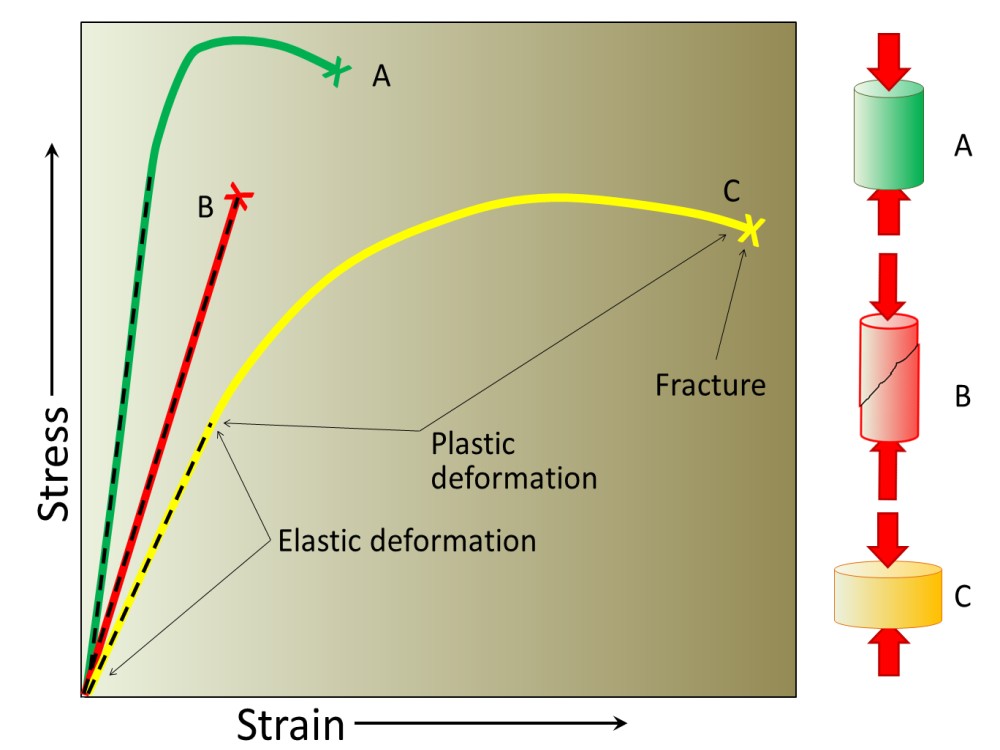The English scientist Robert Hooke discovered in 1660, but published only in 1678, that for many materials the displacement under a load was proportional to force, thus establishing the notion of (linear) elasticity but not yet in a way that was expressible in terms of stress and strain. Edme Mariotte in France published similar discoveries in 1680 and, in addition, reached an understanding of how beams like those studied by Galileo resist transverse loadings—or, more precisely, resist the torques caused by those transverse loadings—by developing extensional and compressional deformations, respectively, in material fibres along their upper and lower portions. It was for the Swiss mathematician and mechanician Jakob Bernoulli to observe, in the final paper of his life, in 1705, that the proper way of describing deformation was to give force per unit area, or stress, as a function of the elongation per unit length, or strain, of a material fibre under tension. The Swiss mathematician and mechanician Leonhard Euler, who was taught mathematics by Jakob’s brother Johann Bernoulli, proposed, among many contributions, a linear relation between stress σ and strain ε, in 1727, of the form σ = Eε, where the coefficient E is now generally called Young’s modulus after the British naturalist Thomas Young, who developed a related idea in 1807.
The notion that there is an internal tension acting across surfaces in a deformed solid was expressed by the German mathematician and physicist Gottfried Wilhelm Leibniz in 1684 and Jakob Bernoulli in 1691. Also, Jakob Bernoulli and Euler introduced the idea that at a given section along the length of a beam there were internal tensions amounting to a net force and a net torque (see below). Euler introduced the idea of compressive normal stress as the pressure in a fluid in 1752. The French engineer and physicist Charles-Augustin Coulomb was apparently the first to relate the theory of a beam as a bent elastic line to stress and strain in an actual beam, in a way never quite achieved by Bernoulli and, although possibly recognized, never published by Euler. He developed the famous expression σ = My/I for the stress due to the pure bending of a homogenous linear elastic beam; here M is the torque, or bending moment, y is the distance of a point from an axis that passes through the section centroid, parallel to the torque axis, and I is the integral of y2 over the section area. The French mathematician Antoine Parent introduced the concept of shear stress in 1713, but Coulomb was the one who extensively developed the idea, first in connection with beams and with the stressing and failure of soil in 1773 and then in studies of frictional slip in 1779.
It was the great French mathematician Augustin-Louis Cauchy, originally educated as an engineer, who in 1822 formalized the concept of stress in the context of a generalized three-dimensional theory, showed its properties as consisting of a 3 × 3 symmetric array of numbers that transform as a tensor, derived the equations of motion for a continuum in terms of the components of stress, and developed the theory of linear elastic response for isotropic solids. As part of his work in this area, Cauchy also introduced the equations that express the six components of strain (three extensional and three shear) in terms of derivatives of displacements for the case in which all those derivatives are much smaller than unity; similar expressions had been given earlier by Euler in expressing rates of straining in terms of the derivatives of the velocity field in a fluid.


